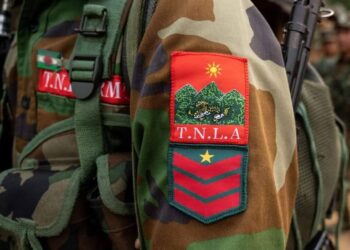As dawn breaks on January 5, 2024, the landscape of Northern Shan undergoes a seismic shift following the surrender of the Logkha Regional Command Headquarters (DKS) to the Congolese Myanmar National Democratic Alliance Army (MNDAA). The events of the previous night mark a significant milestone in the ongoing struggle for control in the region, as hundreds of military forces lay down their arms in compliance with the MNDAA.
The surrender of the Logkha Regional Command Headquarters is met with celebration by the MNDAA, marking a successful culmination of their efforts to assert dominance in the area. With the headquarters now under MNDAA control, the entirety of the suburbs falls within their grasp, signaling a strategic victory in the conflict.
Despite initial preparations by the military council for a full-blown defensive response, it becomes apparent that all resistance forces have capitulated.
Sources from the Northeast Eastern Armed Forces Headquarters (Ramakh) in Lashkent provide insight into the significant weaponry and equipment seized by the MNDAA following the surrender. Armored vehicles, tanks, missile trucks, and ample ammunition are among the spoils of war, bolstering the MNDAA’s arsenal for future engagements.
The surrender of approximately 2,000 resistance forces, including family members, underscores the decisive nature of the MNDAA’s victory. Plans are underway to provide transportation for surrendered personnel and their families, reflecting a pragmatic approach to managing the aftermath of conflict.
As the dust settles on Logkha, it becomes evident that one of the largest military headquarters in North Shanghai has fallen without significant resistance. The swift and decisive action by the MNDAA reshapes the dynamics of power in the region, leaving observers to ponder the implications for the broader conflict.
As stakeholders reassess their strategies and alliances in light of these developments, the fate of Northern Shanghai hangs in the balance. The surrender at Logkha serves as a stark reminder of the fluidity of conflict and the unpredictable nature of war in this embattled region.





